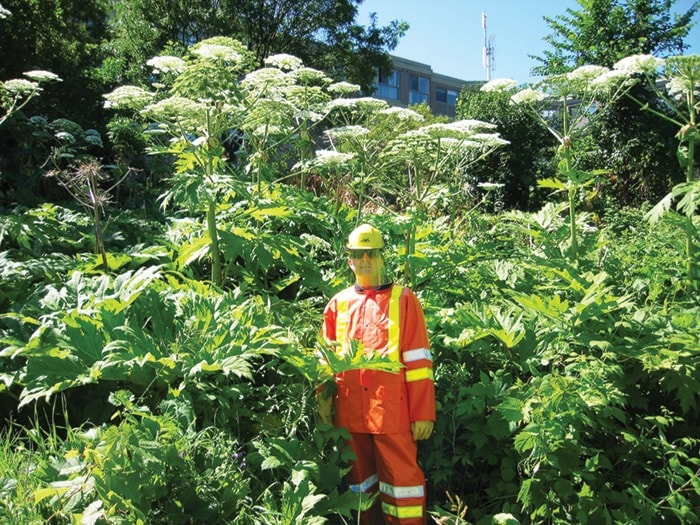Giant Hogweed is a noxious, spreading risk to the local ecology, human health and the economy, according to the Cowichan Valley Regional District – a set of undesirable traits that make it public enemy number-one on the region’s ‘invasive weeds’ hit list.
Public enemy number-two could soon be anyone who harbors this horticultural menace.
At their Feb. 10 meeting CVRD directors will consider a new bylaw that would make it an offense for people to allow giant hogweed to grow on their properties.
And since the species lives up to the ‘giant’ half of its reputation by growing up to 5 meters tall, it will be an offense easily spotted by concerned neighbours and bylaw enforcement officers.
Heracleum mantegazzianum is the Latin name for giant hogweed, and Keith Lawrence, the CVRD’s senior environmental analyst, can give you a long list of reasons why it is the first, and most noxious invasive weed on the region’s list.
Invasive weeds are aggressive, capable of increasing their distribution area by 14 per cent annually; can impact forestry, agriculture and recreational industries; represent a threat to biodiversity – especially to rare and fragile ecological coastal zones and along our riparian corridors.
But to top all that off, giant hogweed’s sap is poisonous. “The impacts from being burned by giant hogweed are very significant,” Lawrence was reported saying in the Feb. 5, 2014 edition of the Cowichan Valley Citizen. “The scars can last for several years.”
That’s one reason giant hogweed has become the poster species for the CVRD’s launch of its noxious weed regulations – it is the only species listed within the ‘scope’ of the proposed bylaw. “Really, what we’re planning at this stage is a pilot launch,” Lawrence told the Chronicle.
The regulations will be in place, and education about giant hogweed and what to do about it, will be part of the rollout. But until 2017 the penalties that go with the bylaw will not be in effect.
If Bylaw 3966 does get its three required readings and is adopted, and if it proves to be a workable part of the noxious weed control strategy, the penalties will come into effect. People who refuse to grasp the nettle – while wearing gloves and protective clothing – could face fines of up to $2,000 for allowing giant hogweed to grow unchecked.
Another reason for making giant hogweed first on the list, is it’s not well established in the Cowichan Valley. “We have an opportunity to really take control and eradicate it,” Lawrence said.
For home-owners, getting to it early will be key. The plant has to be dug up and double bagged, then delivered to a landfill – the only means of effectively disposing of the cuttings at this point.
A cost and inconvenience, true, but eradicating invasive weeds is something communities are having to do, Lawrence said.
The new bylaw would apply to all electoral areas of the CVRD; the municipalities of Ladysmith, Lake Cowichan and Duncan will have to pass their own bylaws if they want to help; North Cowichan already has regulations concerning invasive species, under its nuisance properties bylaw.
Will other species be added to the list? “It’s possible,” Lawrence said, “and it would be on the basis of the success of the identification, management and disposal of the giant hogweed.
